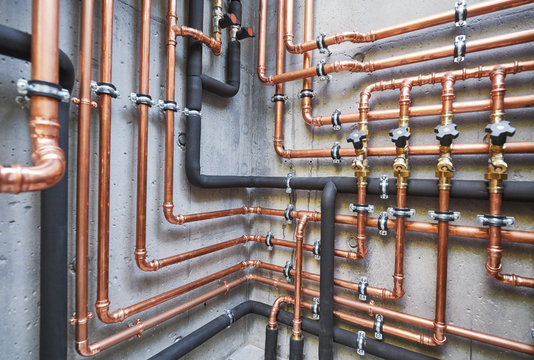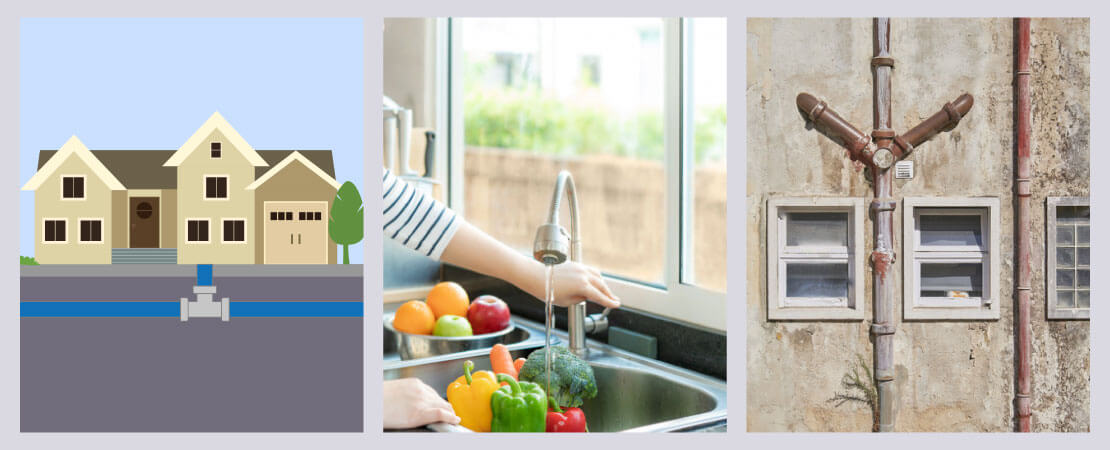A Guide to Your Property's Plumbing System Anatomy
A Guide to Your Property's Plumbing System Anatomy
Blog Article
Nearly everybody is bound to have their unique concepts when it comes to Plumbing Installation 101: All You Need to Know.

Recognizing exactly how your home's plumbing system works is necessary for each property owner. From delivering tidy water for drinking, food preparation, and showering to safely removing wastewater, a properly maintained pipes system is vital for your household's health and convenience. In this thorough overview, we'll explore the detailed network that comprises your home's pipes and offer pointers on upkeep, upgrades, and dealing with common concerns.
Introduction
Your home's plumbing system is more than simply a network of pipelines; it's a complex system that guarantees you have access to tidy water and reliable wastewater elimination. Knowing its parts and exactly how they interact can help you prevent expensive repairs and guarantee every little thing runs smoothly.
Standard Components of a Pipes System
Pipes and Tubes
At the heart of your pipes system are the pipes and tubing that lug water throughout your home. These can be made from numerous products such as copper, PVC, or PEX, each with its advantages in terms of longevity and cost-effectiveness.
Fixtures: Sinks, Toilets, Showers, etc.
Fixtures like sinks, bathrooms, showers, and bath tubs are where water is used in your home. Comprehending just how these fixtures connect to the plumbing system assists in identifying issues and intending upgrades.
Shutoffs and Shut-off Factors
Valves manage the flow of water in your plumbing system. Shut-off valves are vital throughout emergencies or when you need to make repair work, allowing you to isolate parts of the system without interrupting water circulation to the whole residence.
Water Supply System
Main Water Line
The primary water line links your home to the local supply of water or a personal well. It's where water enters your home and is dispersed to numerous components.
Water Meter and Pressure Regulator
The water meter steps your water usage, while a pressure regulator guarantees that water streams at a risk-free pressure throughout your home's plumbing system, preventing damages to pipelines and components.
Cold Water vs. Hot Water Lines
Comprehending the distinction between cold water lines, which supply water directly from the main, and warm water lines, which lug warmed water from the hot water heater, assists in fixing and planning for upgrades.
Drain System
Drain Pipeline and Traps
Drain pipelines lug wastewater far from sinks, showers, and bathrooms to the sewer or septic tank. Traps protect against sewer gases from entering your home and additionally catch debris that could create blockages.
Ventilation Pipelines
Air flow pipes allow air into the water drainage system, stopping suction that could slow down water drainage and cause catches to empty. Proper air flow is important for keeping the integrity of your plumbing system.
Relevance of Proper Drain
Making certain appropriate water drainage avoids back-ups and water damage. Regularly cleaning drains pipes and maintaining traps can protect against costly repair services and extend the life of your plumbing system.
Water Heating Unit
Sorts Of Water Heaters
Hot water heater can be tankless or traditional tank-style. Tankless heating units warmth water on demand, while storage tanks store heated water for immediate usage.
Upgrading Your Plumbing System
Factors for Upgrading
Upgrading to water-efficient fixtures or changing old pipes can enhance water top quality, decrease water costs, and enhance the worth of your home.
Modern Plumbing Technologies and Their Advantages
Discover technologies like clever leak detectors, water-saving bathrooms, and energy-efficient hot water heater that can save money and minimize ecological influence.
Price Considerations and ROI
Calculate the upfront costs versus long-term financial savings when taking into consideration pipes upgrades. Several upgrades pay for themselves with decreased utility bills and less repair services.
Just How Water Heaters Link to the Plumbing System
Recognizing how hot water heater link to both the cold water supply and hot water circulation lines helps in identifying issues like inadequate warm water or leaks.
Upkeep Tips for Water Heaters
Routinely flushing your water heater to eliminate debris, checking the temperature settings, and checking for leakages can expand its lifespan and improve energy efficiency.
Usual Pipes Concerns
Leakages and Their Reasons
Leakages can take place as a result of maturing pipes, loose fittings, or high water pressure. Attending to leakages immediately stops water damages and mold and mildew growth.
Blockages and Blockages
Clogs in drains pipes and commodes are commonly triggered by flushing non-flushable items or an accumulation of grease and hair. Using drain displays and bearing in mind what decreases your drains can prevent obstructions.
Indicators of Plumbing Problems to Look For
Low tide stress, slow-moving drains, foul odors, or abnormally high water expenses are indications of possible pipes problems that should be resolved immediately.
Plumbing Maintenance Tips
Normal Assessments and Checks
Schedule yearly plumbing evaluations to catch concerns early. Look for indicators of leaks, corrosion, or mineral accumulation in faucets and showerheads.
DIY Upkeep Tasks
Easy jobs like cleaning tap aerators, checking for bathroom leaks utilizing dye tablets, or protecting revealed pipelines in cold environments can avoid major pipes concerns.
When to Call a Specialist Plumbing Technician
Know when a plumbing concern requires specialist know-how. Attempting intricate repair work without proper understanding can lead to even more damage and greater repair service costs.
Tips for Minimizing Water Usage
Basic habits like taking care of leaks promptly, taking shorter showers, and running complete tons of laundry and recipes can save water and reduced your utility bills.
Eco-Friendly Pipes Options
Think about sustainable pipes products like bamboo for flooring, which is durable and environmentally friendly, or recycled glass for countertops.
Emergency situation Readiness
Steps to Take During a Pipes Emergency situation
Know where your shut-off valves lie and just how to shut off the water supply in case of a ruptured pipeline or major leakage.
Value of Having Emergency Contacts Convenient
Maintain contact details for regional plumbers or emergency services conveniently available for quick action during a pipes dilemma.
Environmental Influence and Conservation
Water-Saving Fixtures and Devices
Setting up low-flow taps, showerheads, and commodes can considerably lower water use without sacrificing performance.
DIY Emergency Situation Fixes (When Appropriate).
Short-lived fixes like making use of duct tape to spot a leaking pipeline or placing a bucket under a leaking faucet can lessen damage up until a professional plumbing professional shows up.
Verdict.
Comprehending the makeup of your home's plumbing system encourages you to maintain it successfully, conserving time and money on repairs. By complying with regular upkeep routines and remaining notified regarding modern pipes innovations, you can guarantee your plumbing system runs effectively for several years to come.
HOW YOUR PLUMBING SYSTEM WORKS
Which Pipes Do What?
Blue lines = fresh water supply entering the building Red lines = hot water supply entering the building Grey lines = pipes carrying waste away from the building and venting pipes carrying gases away from the building (through the roof) YOUR MAIN PLUMBING SYSTEMS
There are two main plumbing systems that support your home s basic plumbing needs one that brings clean water into your home, and one that sends dirty water away from your home. Connected to the toilet, bath, shower, and other faucets in your home, these two systems keep your water flowing in the right directions.
ACCESSING FRESH WATER
Fresh and clean water is brought into your home through the main water supply line . Filtered through one pipe, this water is pressured to flow into the various fixtures in your home at any given time.
This water can be sourced from a well located on your property, a pond or river (mostly cottages), or, as in most cases, from the city s municipal water treatment centre. However, it is important to note that water that is untreated, such as the water siphoned from ponds or rivers, may not be safe to drink. Personal water supplies always need to be treated for hardness and contaminants before consumed.
MUNICIPAL WATER SUPPLIES
Improve taste and odour Remove sediment Eliminate hardness Reduce chlorine COLD WATER SUPPLY VS. HOT WATER SUPPLY
Cold water flows into your home or building through the service line, which then distributes hot or cold water to your fixtures. This line is most commonly run through a central column that runs floor to floor. Hot water runs in short and straight pipes as the longer the pipeline, the more heat that will be lost in the transfer. Having shorter pipes also allows residents to access hot water more quickly.
WASTE WATER SYSTEM
Your wastewater system is divided into two parts pipes that send wastewater away from your home and venting pipes that send sewer gas away from your home. Sewage water travels through pipes that flush the water and waste towards local sewers that are operated and managed by your city or town. Most sewer systems rely on gravity to move the wastewater to where it needs to go.
The further away from your toilet or sink, the larger wastewater pipes become. This allows for waste to be disposed of from various parts of your home or business at once without pipe blockages. The angle and flow of these pipes are also essential for keeping your waste pipes clear of build up.
https://harrisplumbing.ca/how-your-home-plumbing-system-works/

I am very interested in Plumbing Installation 101: All You Need to Know and I'm hoping you liked our piece. Sharing is caring. You never know, you could be doing someone a favor. I appreciate reading our article about Exploring Your Homes Plumbing Anatomy.
Booking Page Report this page